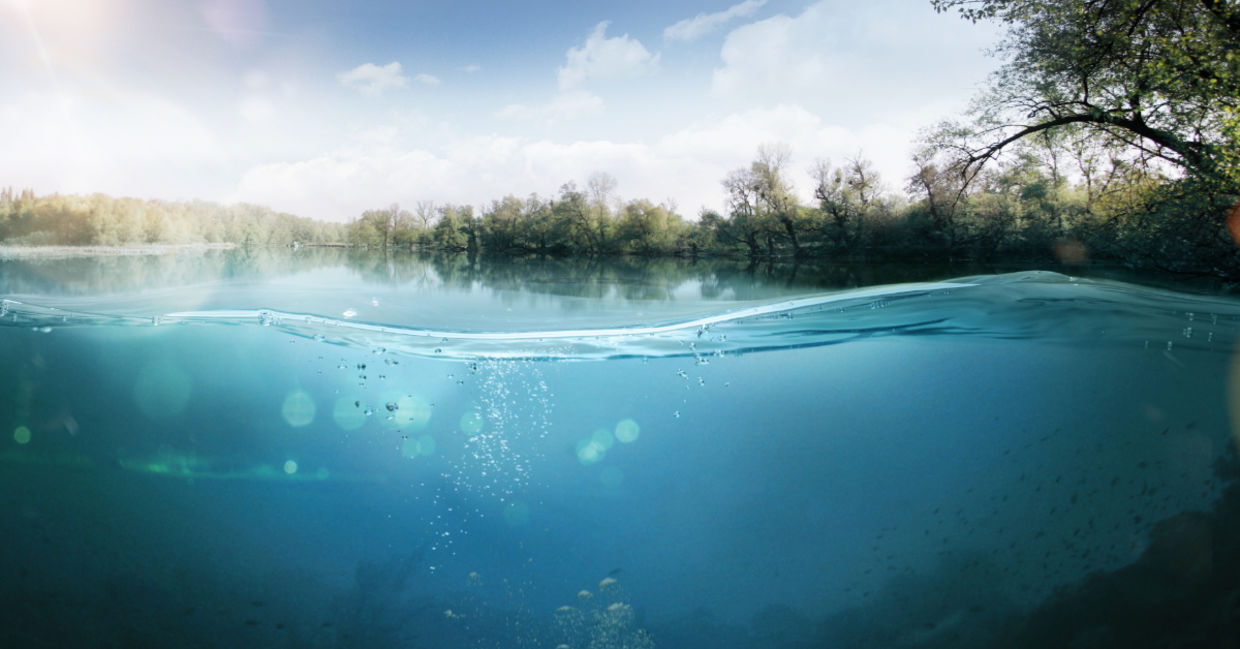
(Rocksweeper / Shutterstock.com)
One man followed his dreams, transforming polluted wastelands into pristine
lakes. Anand Malligavad, affectionately known as ‘Lake Man’ in India, studied
ancient techniques to revitalize lakes, restoring wildlife and precious drinking water.
Malligavad, a mechanical engineer from Bengaluru, India, literally ‘fell’ into a
project that soon became his life’s passion, according to the NYT. It
was in 2017, and he was out for a walk with colleagues when he stumbled, falling
into stinky, sewage-filled sludge. He remembered from his childhood that this was
once a clean lake.
He did not lose a moment. The very next day, he asked his company if they would
help fund the restoration of the 36-acre Kyalasanahalli Lake. They were doubtful
Malligavad could do this as he had no knowledge of lake restoration. So Malligavad
researched and discovered that 1,500 years ago, this was one of the self-sustaining
irrigation lakes built by the Chula dynasty.
The city of lakes
The lakes built by the Chula in the area survived centuries; even 500 years ago, the
city of Bengaluru was called the City of Lakes, according to The Better India. As the
population increased, the city developed. Industry arrived and by 1960, only 263
lakes remained. Today, there are 81 lakes with only 35 being ‘alive.’ Most of these
lakes are filled with construction debris, waste, chemicals, plastic, and sewage,
reports NYT.
After four months of dedicated research, Malligavad earned a corporate
responsibility grant from his company that enabled him to start working on this
project. With the aid of a dozen excavators and hundreds of volunteers, they
removed the waste, opened the channels, and with the muck they removed, they
constructed five islands.
Malligavad employed the ancient Chola method to construct mud walls that conduct
the excess rainwater into the lakes for agricultural use. It took them just 45 days and
then they waited for the rains. Six months later, when monsoon season came, he
was out boating on a fresh, clean lake along with migratory birds and ducks.
“When I saw the lake, I felt younger, and I wanted to jump into it,” Malligavad told
The New York Times. “That is what motivates me to keep going.”
A sense of urgency
Since this first win, he has not stopped. He left his job and created a non-profit called
The Lake Revivers Collective. “All I have is a sense of urgency that if we don’t
repair the damage we’ve already wrecked,” he told the Sacred Groves blog, “it’s
going to end badly for all of us…” There is severe water scarcity in India, and in
Bangaluru, water tankers must now drive in to meet the population’s needs.
Aside from finding a solution to provide drinking water and agricultural water,
Malligavad is transforming the natural environment around the lakes. His methods
help to clean the water, attract wildlife, improve biodiversity, and offer food.
In the Kyalasanahalli Lake project, volunteers planted 18,000 indigenous
saplings; these include 3,000 fruit trees, 3,000 native plants, and 2,000 medicinal
plants. Birds are now nesting on the five islands they created. He also planted
water-purifying lotus and lilies as well as grasses on the lake’s edge to help bind
the soil.
Involving community
In order to educate the community, he involves local residents and corporations.
“When they reap the undoubted benefits of having a clean waterbody in their
vicinity, they are further encouraged to keep it that way,” Malligavad told Sacred
Grove.
Since his first success, Malligavad has restored many lakes in the region with a
combined surface of 800 acres, according to NYT. These now
hold 106 million gallons of water and the groundwater level has increased by an
astonishing eight feet.
Malligavad is continuing this work both in his state and in other parched places
across India. “After 39 years of consuming so much on this planet, I’ve decided
it’s time to give back,” he says. “Now I’ve dedicated my entire life to water,
wildlife and afforestation and it feels good…”
He told NYT that this is his life’s purpose and he desires to reclaim a
hundred thousand lakes in his lifetime. “You can find alternatives to milk,” he
explained, “but what will you do without water?”
YOU MIGHT ALSO LIKE:
New Gel Creates Water From Desert Air
7 New Technologies That Create Clean Water for a Thirsty World
7 Hacks to Use Less Water







